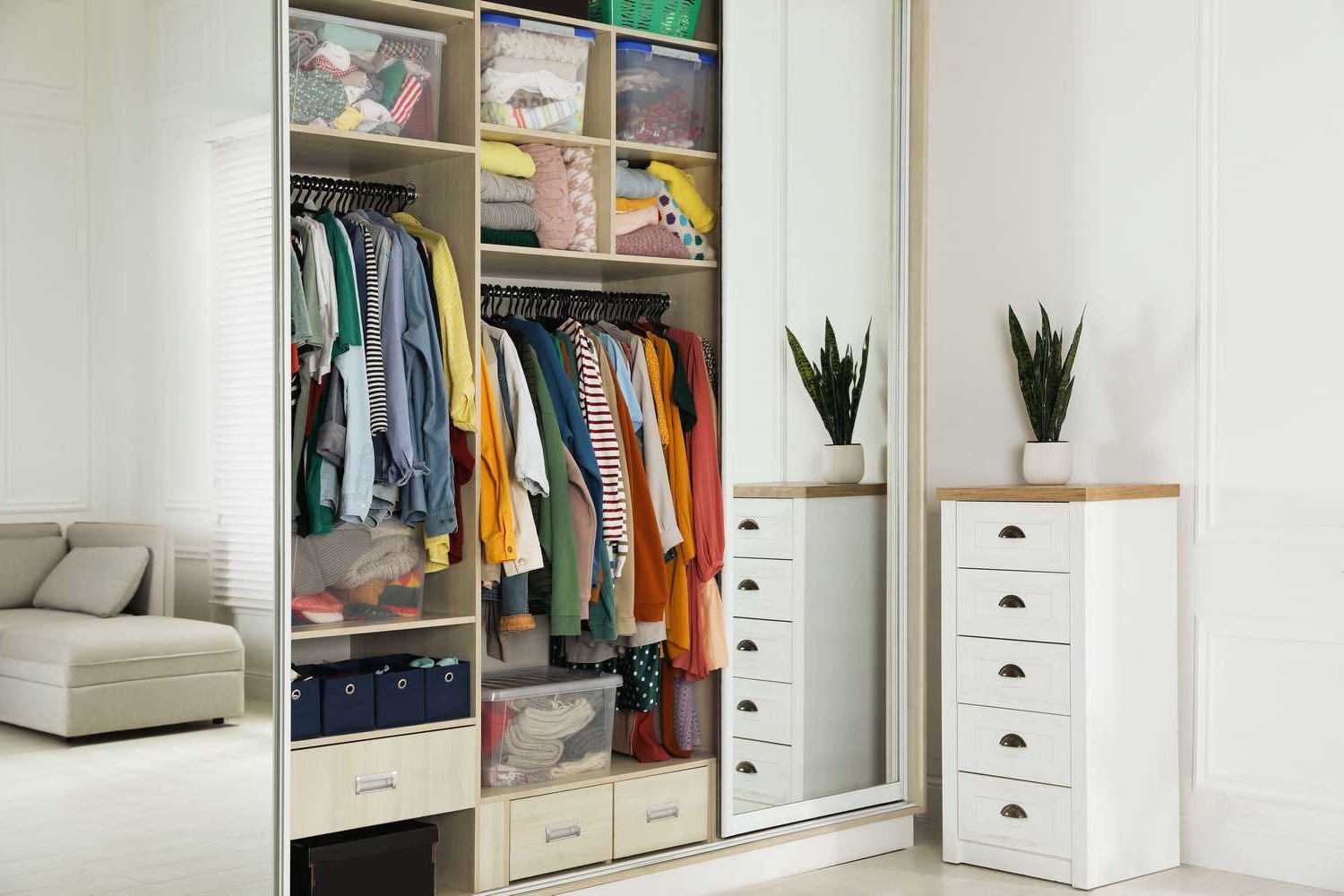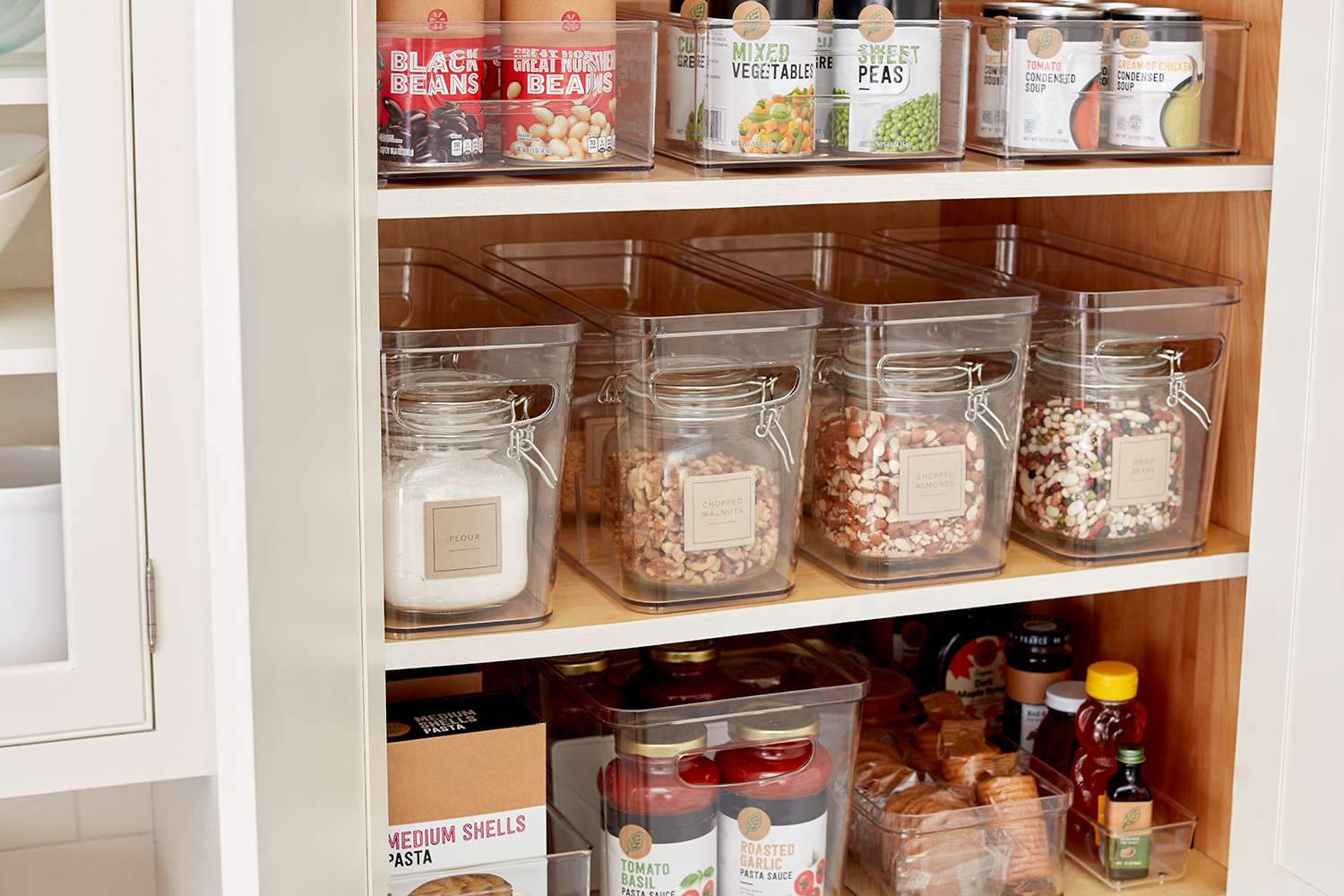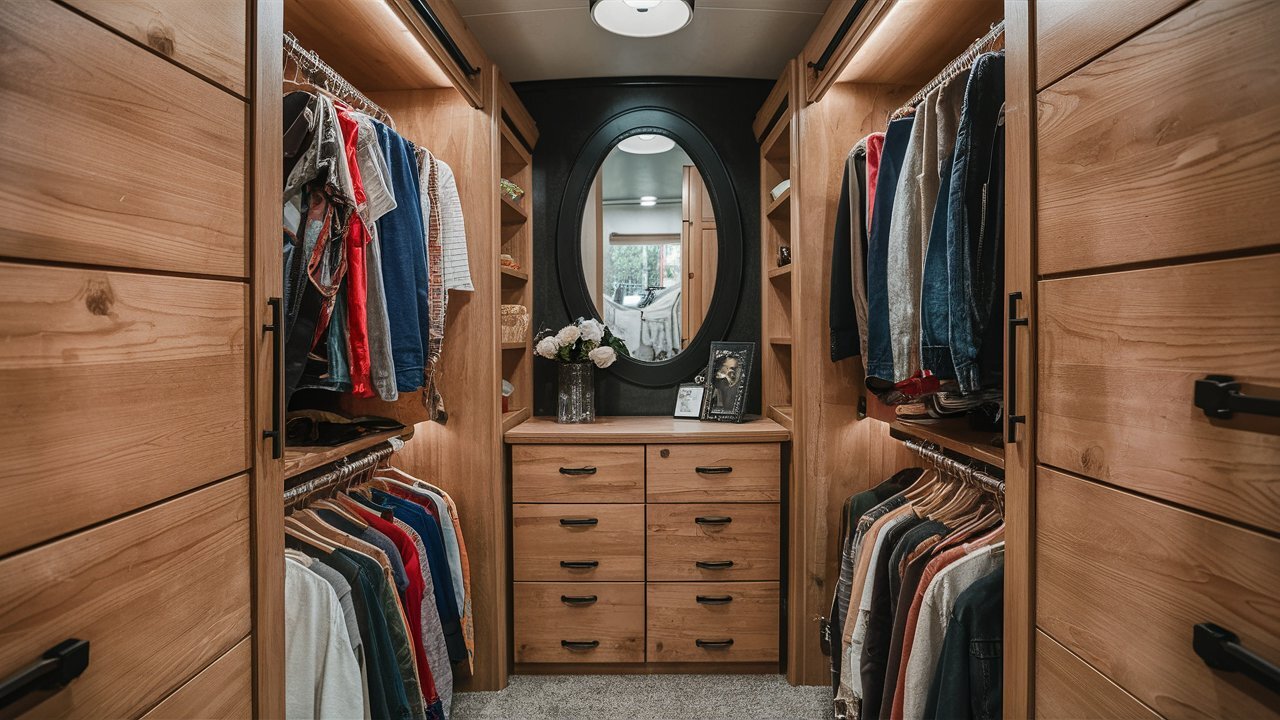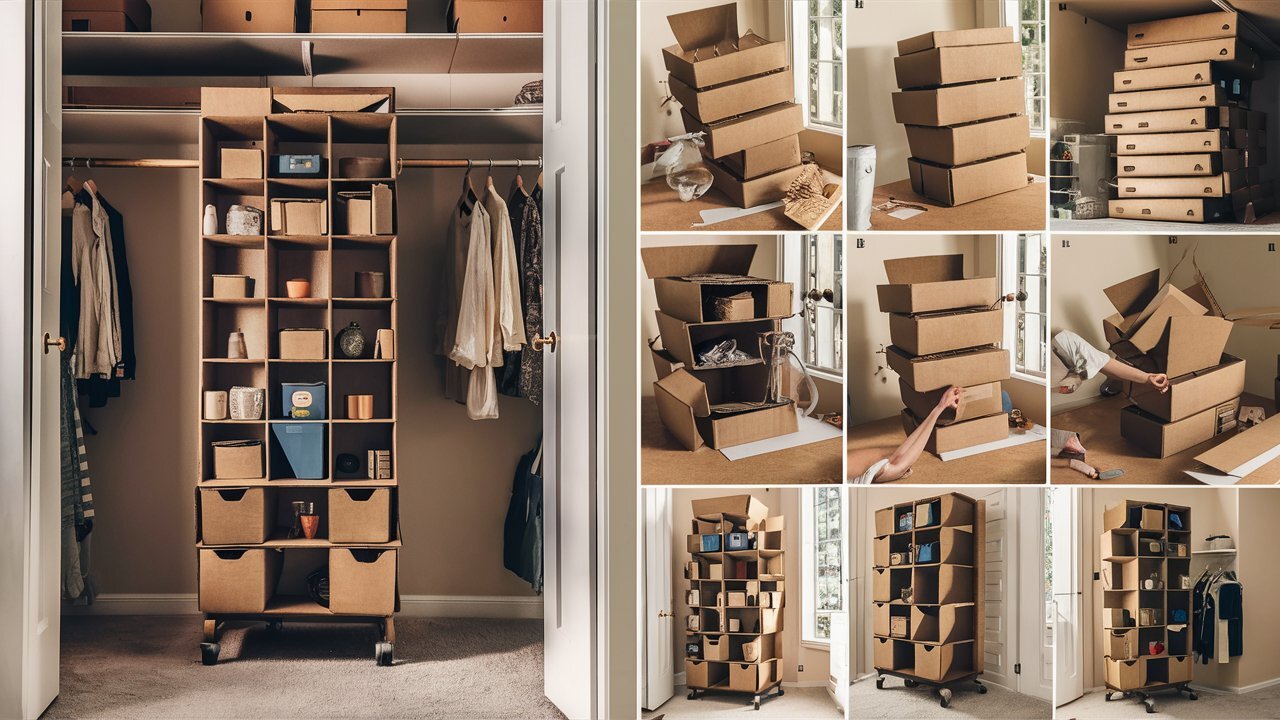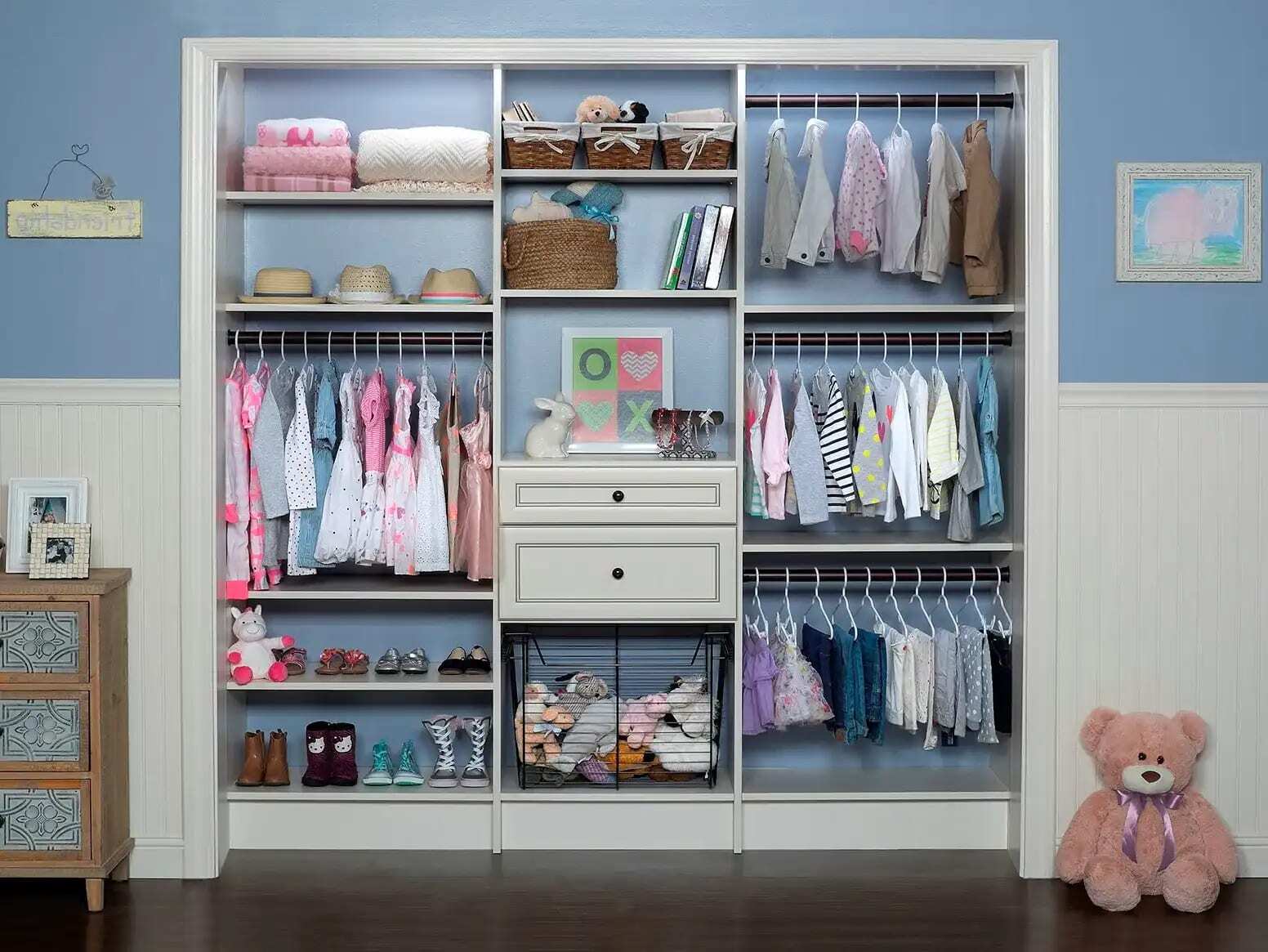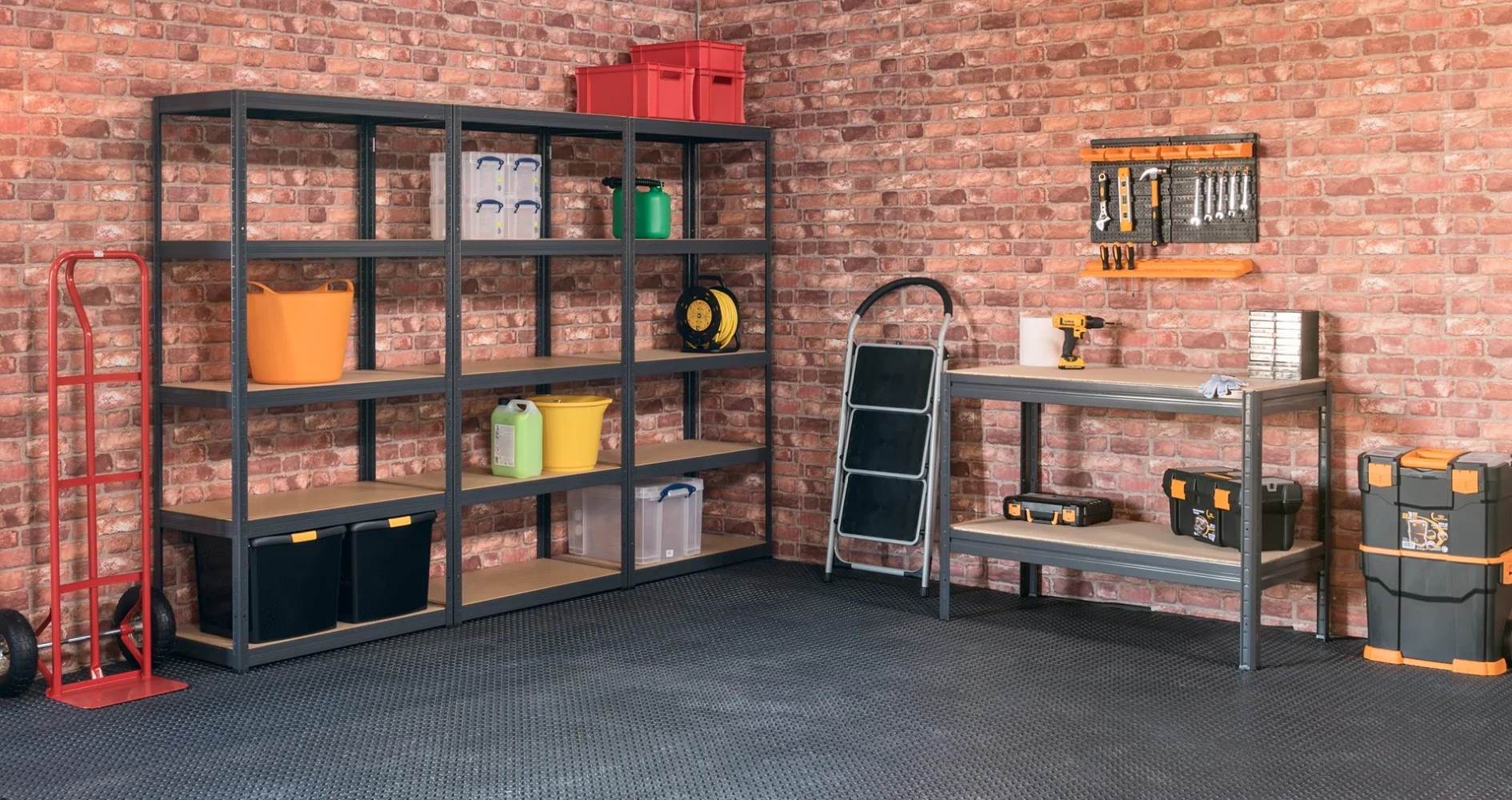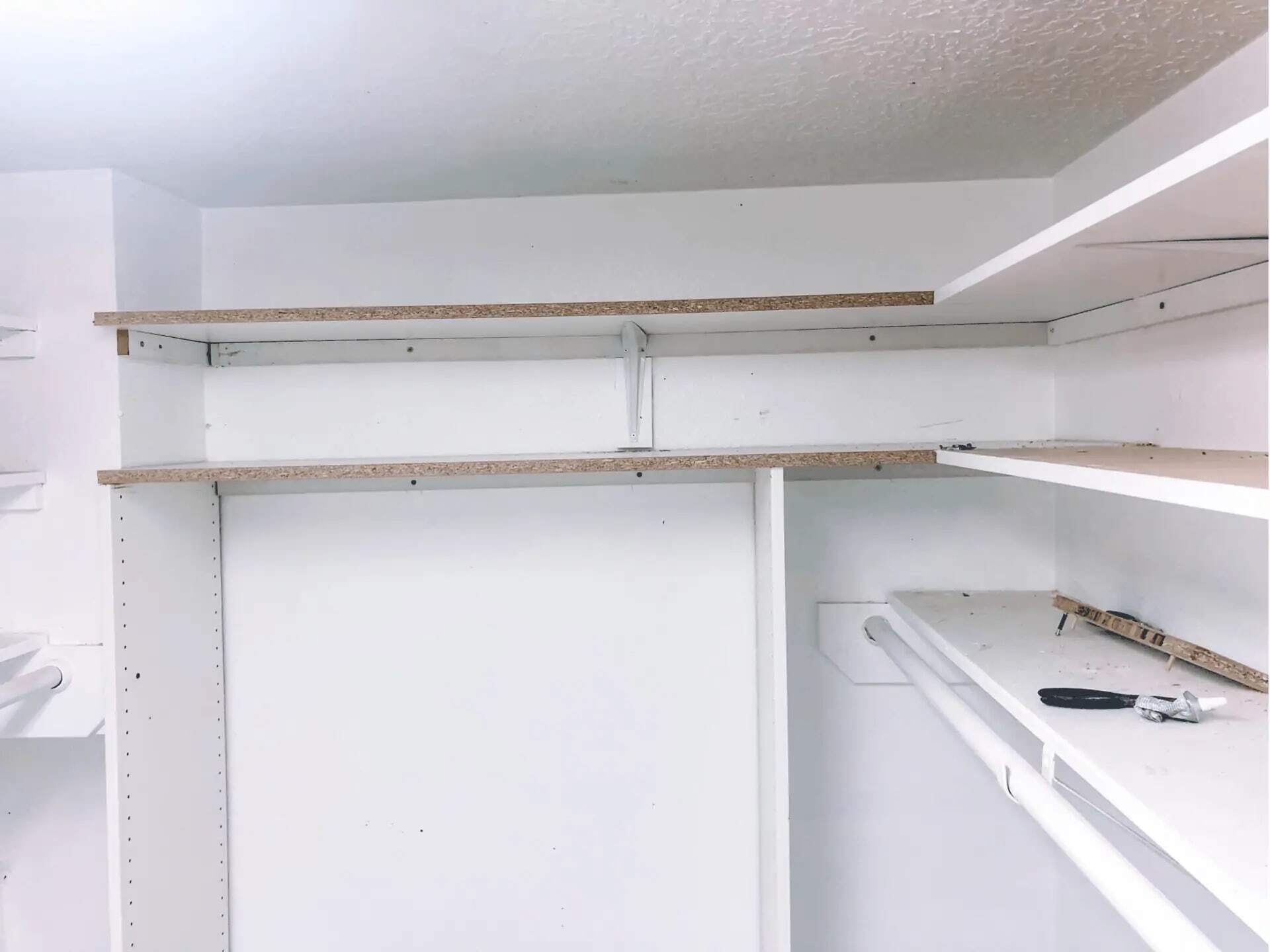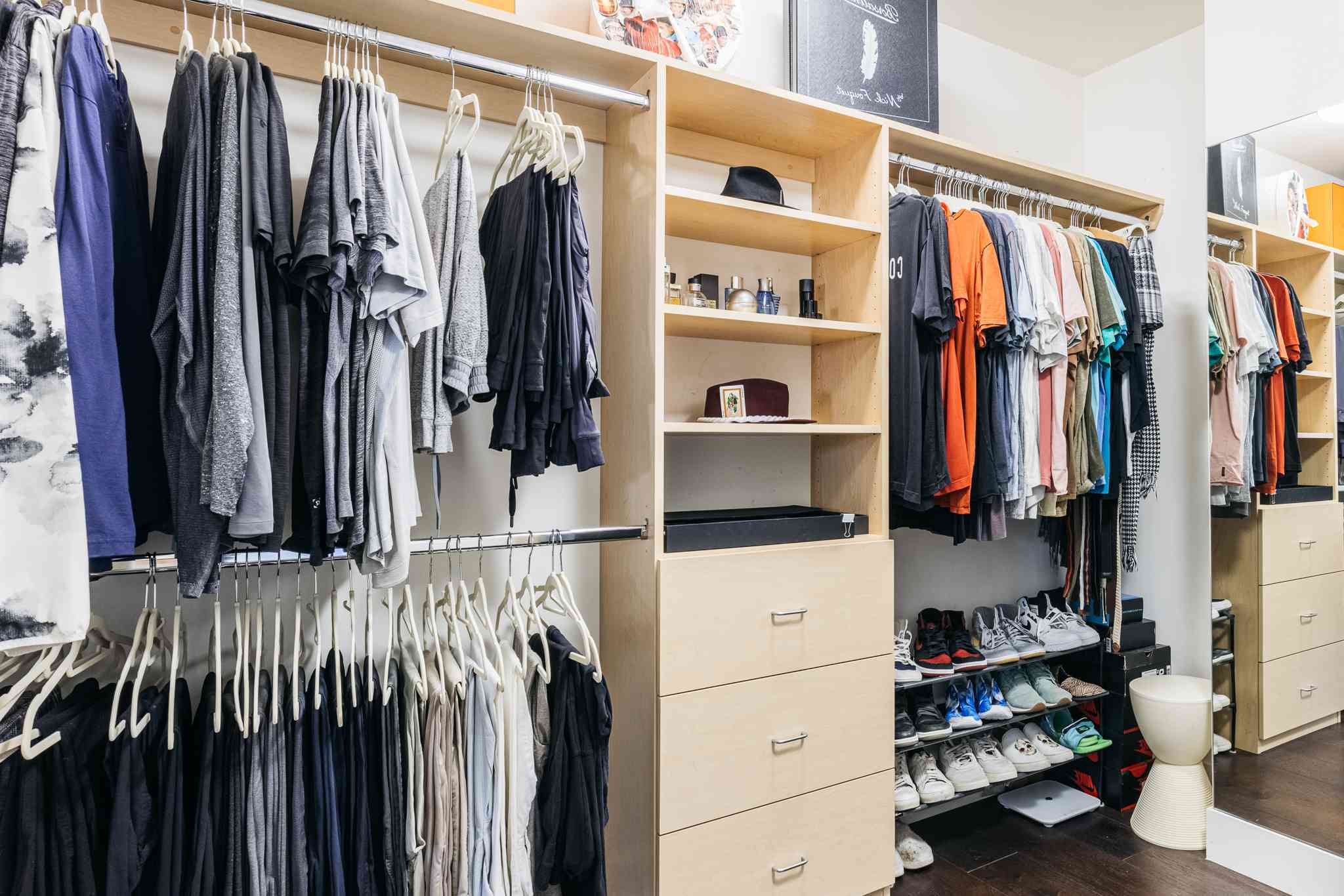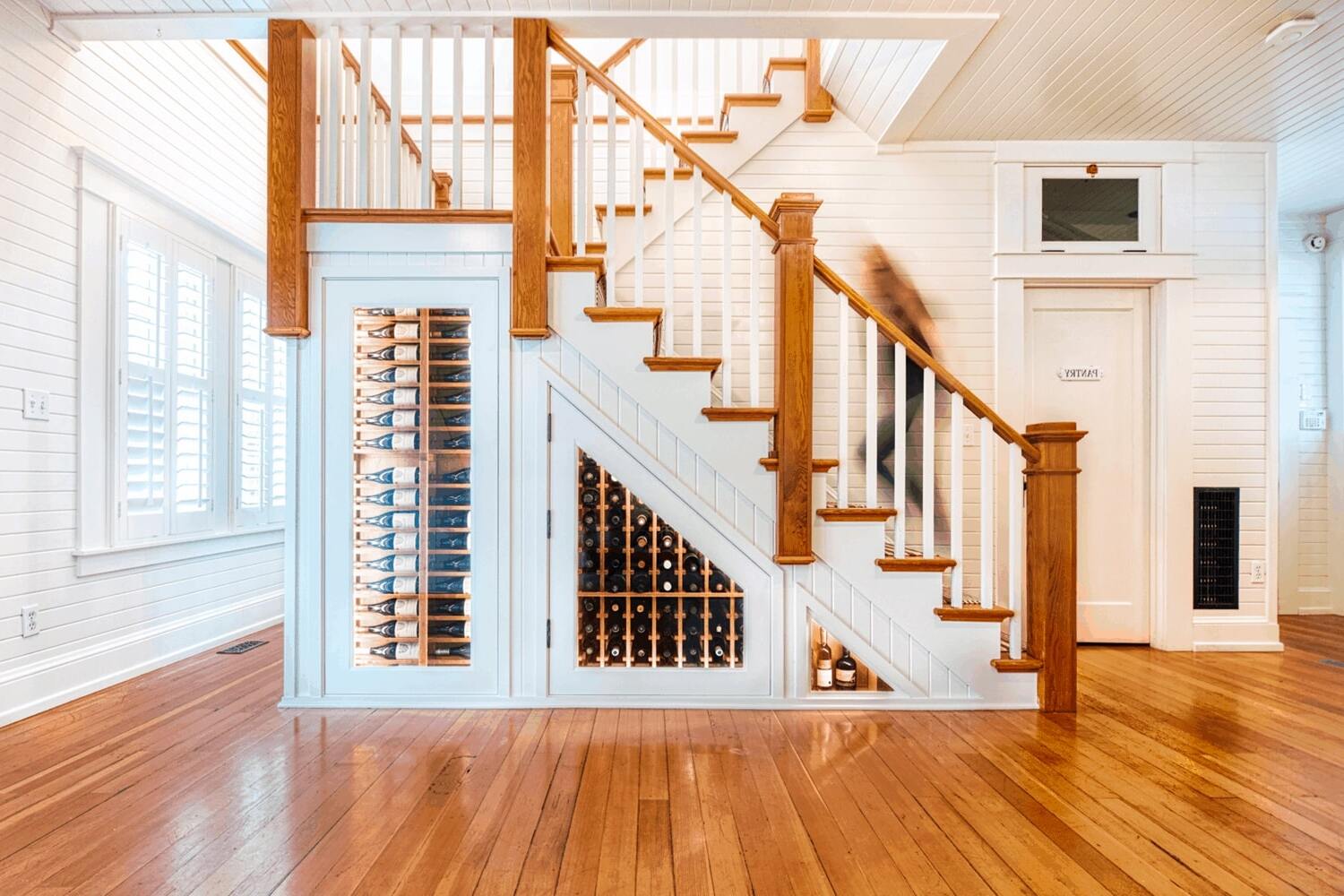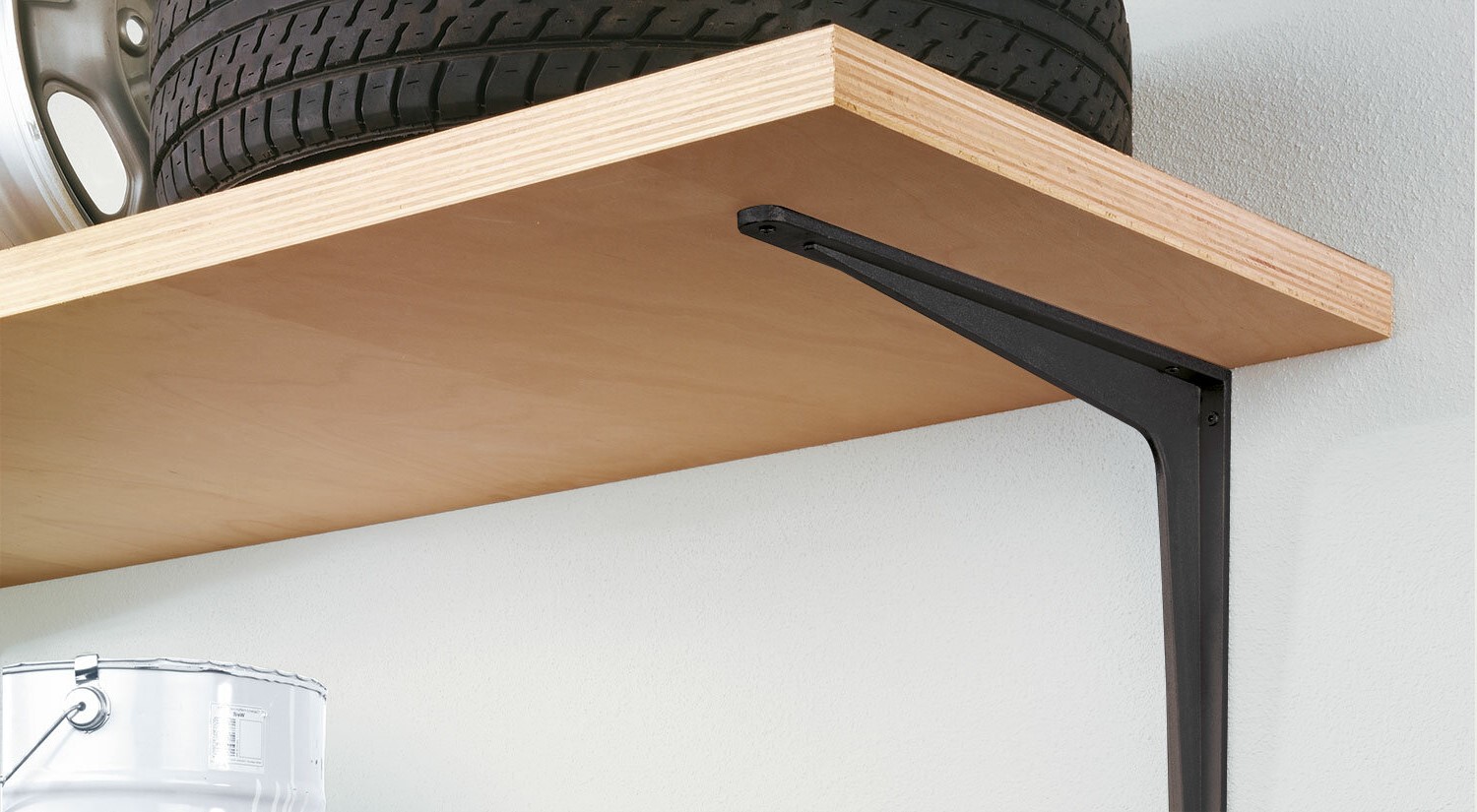Home>Organize & Storage>Closet Organization>How To Build Shelves In A Closet
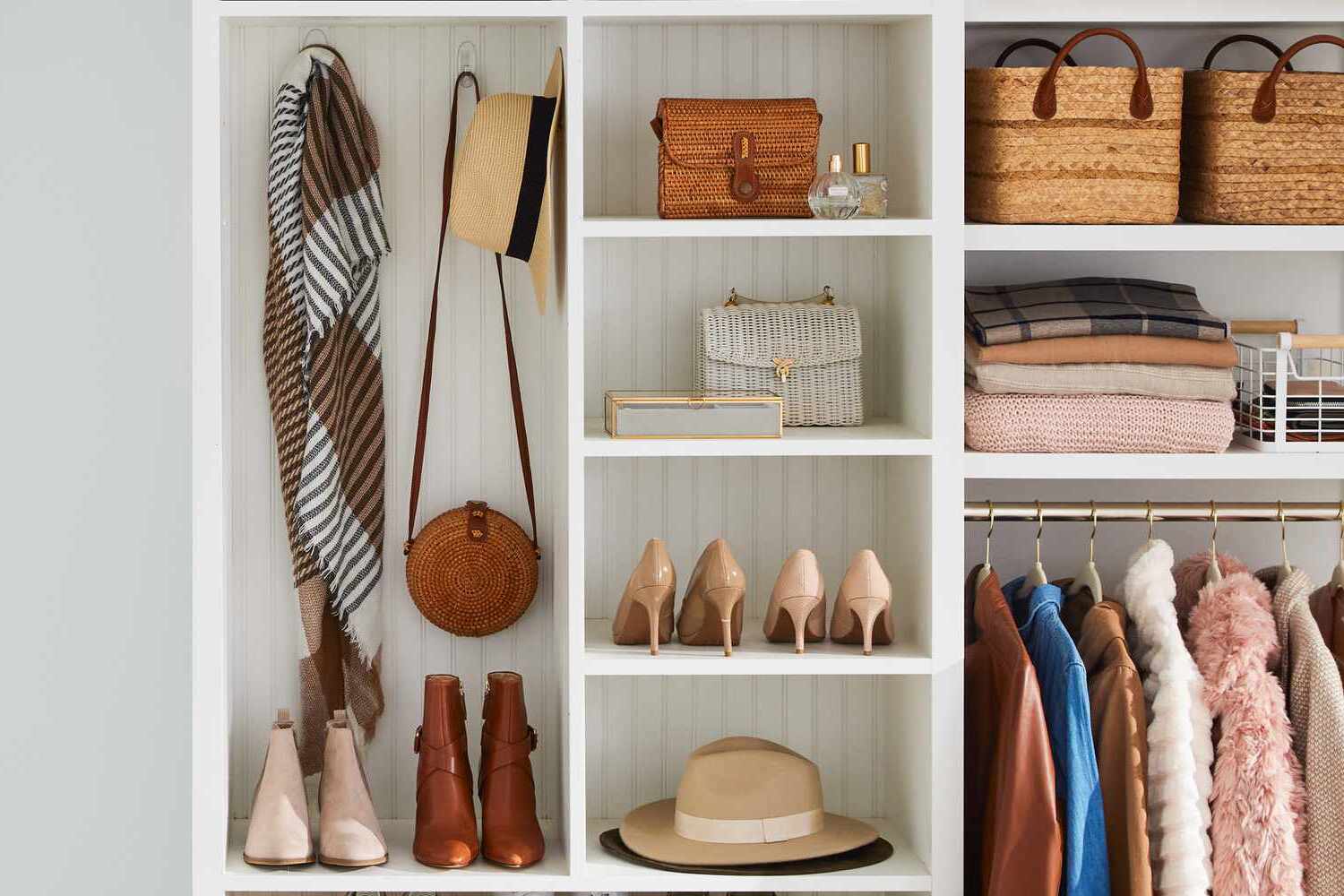

Closet Organization
How To Build Shelves In A Closet
Modified: November 28, 2024

Senior Editor for Organize & Storage, Jeff transforms spaces with his DIY decor and organizational prowess. His design sensibility and engagement in the art community bring functional beauty to our pages.
Learn how to maximize your closet space with our step-by-step guide on building shelves. Get expert tips for efficient closet organization.
(Many of the links in this article redirect to a specific reviewed product. Your purchase of these products through affiliate links helps to generate commission for Twigandthistle.com, at no extra cost. Learn more)
Introduction
Creating additional storage space in your closet can be a game-changer when it comes to keeping your living space organized and clutter-free. One effective way to achieve this is by installing shelves in your closet. Whether you're a DIY enthusiast or looking to embark on a new home improvement project, building shelves in your closet can be a rewarding and practical endeavor.
By customizing the shelving to fit your specific needs, you can optimize the available space in your closet, making it easier to keep your belongings neatly arranged and easily accessible. From clothing and shoes to accessories and household items, a well-organized closet can streamline your daily routine and contribute to a more serene living environment.
In this comprehensive guide, we will walk you through the step-by-step process of building shelves in your closet. From measuring the space and selecting the right materials to cutting the shelves to size and installing them securely, you'll gain valuable insights and practical tips to help you tackle this project with confidence.
Whether you're a seasoned DIY enthusiast or a novice looking to explore the world of home improvement, this guide will equip you with the knowledge and skills needed to transform your closet into a well-organized and efficient storage space. So, roll up your sleeves, gather your tools, and let's dive into the exciting journey of creating custom shelves in your closet.
Read more: DIY Closet Shelves: No-Drill Installation
Step 1: Measure the Closet
Before diving into the process of building shelves in your closet, it's crucial to start with accurate measurements. This initial step sets the foundation for a successful shelving installation, ensuring that the shelves fit seamlessly within the available space.
Begin by clearing out the contents of your closet to allow unobstructed access to the walls and floor. Use a reliable tape measure to record the dimensions of the closet interior, taking precise measurements of the width, height, and depth. It's essential to account for any irregularities in the walls or floor, as these can impact the fitting of the shelves.
When measuring the width of the closet, take multiple measurements at different heights to accommodate any variations in the wall's alignment. Similarly, measure the height from the floor to the ceiling at various points to identify any discrepancies that may affect the shelf placement.
Additionally, assess the depth of the closet to determine the maximum depth for the shelves. This step is crucial for ensuring that the shelves do not protrude too far into the closet, allowing for easy access to the stored items without overcrowding the space.
As you record the measurements, make note of any obstacles such as light fixtures, electrical outlets, or ventilation ducts that may impact the shelf placement. These details will inform the design and positioning of the shelves, ensuring that they integrate seamlessly with the closet's layout.
By meticulously measuring the closet, you lay the groundwork for a tailored shelving solution that maximizes the available space while complementing the overall functionality of the closet. With precise measurements in hand, you can proceed to the next step with confidence, knowing that your custom-built shelves will harmonize perfectly with the dimensions of your closet.
Step 2: Choose the Right Materials
Selecting the appropriate materials for building shelves in your closet is a pivotal decision that directly impacts the durability, aesthetics, and functionality of the finished product. By carefully considering the characteristics of different materials, you can make informed choices that align with your design preferences and storage needs.
Considerations for Shelf Materials
1. Wood
Wood remains a popular choice for closet shelving due to its timeless appeal and versatility. When opting for wood, consider the specific type of wood that best suits your requirements. Hardwoods such as oak, maple, or cherry offer exceptional durability and a classic aesthetic, while softwoods like pine provide a more cost-effective option without compromising on strength. Additionally, consider the finish of the wood, whether it's natural, stained, or painted, to complement the overall design of your closet.
2. Melamine or MDF
Melamine and medium-density fiberboard (MDF) are engineered wood products that offer a budget-friendly yet durable alternative to solid wood. Melamine shelves are coated with a smooth, easy-to-clean surface, making them ideal for closets where frequent use is expected. MDF, known for its uniform density and smooth finish, provides a stable base for shelving and can be customized with various laminates and finishes to suit your aesthetic preferences.
3. Wire Shelving
Wire shelving systems are renowned for their lightweight, ventilated design, making them an excellent choice for promoting air circulation and visibility within the closet. These shelves are often adjustable, allowing for flexible configurations to accommodate different storage needs. Additionally, wire shelving is resistant to moisture and can be an ideal solution for organizing items such as shoes, linens, and accessories.
Additional Materials and Accessories
In addition to the primary shelving material, it's essential to consider the supporting components that contribute to the stability and functionality of the shelves. This includes selecting sturdy shelf brackets or supports that are compatible with the chosen shelving material. Depending on the design and weight-bearing capacity required, you may opt for adjustable brackets, concealed supports, or decorative brackets that enhance the visual appeal of the shelves.
Furthermore, investing in quality fasteners, such as screws and wall anchors, is crucial for securely attaching the shelves to the closet walls. These fasteners should be appropriate for the wall material, whether it's drywall, plaster, or wood studs, to ensure a reliable and long-lasting installation.
By carefully evaluating the characteristics and suitability of different materials, you can make informed decisions that align with your aesthetic preferences, budget constraints, and functional requirements. The right materials will lay the foundation for durable, visually appealing, and highly functional shelves that enhance the organization and efficiency of your closet space.
Read more: DIY Linen Closet Shelves Guide
Step 3: Cut the Shelves to Size
With precise measurements in hand and the chosen materials at the ready, the next crucial step in building shelves for your closet is cutting the shelves to the exact dimensions required. This process demands accuracy and attention to detail to ensure that the shelves fit seamlessly within the designated space, creating a polished and professional finish.
If you've opted for wood as the primary shelving material, it's essential to use the appropriate tools for cutting, such as a circular saw, table saw, or a handheld jigsaw. Before cutting the shelves, carefully mark the measurements on the wood, using a straight edge or a carpenter's square to create clear and accurate guidelines for cutting.
When working with engineered wood products like melamine or MDF, it's crucial to employ specialized cutting techniques to achieve clean and precise edges. A carbide-tipped saw blade or a scoring knife can help minimize chipping and ensure a smooth finish when cutting these materials.
Prior to making any cuts, it's advisable to double-check the measurements and markings to avoid errors that could compromise the fit of the shelves. Remember the age-old adage: "Measure twice, cut once." This extra precaution can save time and resources by preventing costly mistakes.
As you proceed with cutting the shelves, prioritize safety by wearing appropriate protective gear, such as safety goggles and hearing protection, especially when using power tools. Additionally, ensure that the work area is well-ventilated and free from clutter to facilitate safe and precise cutting.
Once the shelves are cut to the specified dimensions, take the time to inspect the edges and surfaces for any imperfections or rough spots. Sanding the edges with fine-grit sandpaper can refine the finish and eliminate any splinters or rough edges, resulting in shelves that are not only accurately sized but also smooth and visually appealing.
By meticulously cutting the shelves to the precise measurements and ensuring a polished finish, you set the stage for a seamless installation process. The attention to detail at this stage contributes to the overall quality and functionality of the shelves, ensuring that they integrate harmoniously with the closet space and provide a reliable storage solution for your belongings.
Step 4: Install the Shelf Brackets
Once the shelves are cut to the precise dimensions, the next critical phase involves installing the shelf brackets to provide robust support for the shelves within the closet. The proper installation of shelf brackets is essential for ensuring the stability and weight-bearing capacity of the shelves, contributing to a secure and functional storage solution.
Selecting the Right Shelf Brackets
Before commencing the installation process, it's crucial to select shelf brackets that align with the chosen shelving material and the intended load-bearing capacity. Consider the weight of the items that will be stored on the shelves, as this will influence the type and quantity of brackets required. Additionally, take into account the aesthetic preferences and design coherence, as shelf brackets come in a variety of styles and finishes, ranging from discreet and utilitarian to decorative and ornate.
Positioning and Marking the Bracket Locations
With the shelf brackets at the ready, carefully determine the optimal positioning for each bracket within the closet. It's advisable to use a level and a measuring tape to ensure that the brackets are aligned and spaced evenly along the length of the closet walls. Mark the precise locations for the bracket installation, taking into consideration any obstructions such as electrical outlets or wall studs that may impact the placement.
Read more: DIY Closet System Ideas
Securing the Brackets to the Walls
Using the marked guidelines, proceed to attach the shelf brackets to the closet walls using appropriate fasteners, such as screws and wall anchors. It's essential to choose fasteners that are suitable for the wall material and provide a secure attachment for the brackets. If the closet walls are constructed of drywall, consider using sturdy drywall anchors to reinforce the installation and prevent the brackets from pulling away under the weight of the shelves.
Verifying Stability and Alignment
As the brackets are secured in place, take a moment to verify their stability and alignment. Use a level to ensure that the brackets are positioned horizontally, preventing any slanting or uneven support for the shelves. Additionally, apply gentle pressure to the brackets to confirm that they can withstand the anticipated weight of the shelves and their contents without shifting or loosening from the walls.
Preparing for Shelf Placement
Once the shelf brackets are securely installed and verified for stability, the stage is set for placing the shelves onto the brackets. Carefully position the shelves onto the brackets, ensuring a snug and level fit that maximizes the available space within the closet. With the shelves in place, assess their alignment and stability, making any necessary adjustments to achieve a seamless and secure installation.
By meticulously following the steps for installing the shelf brackets, you establish a solid foundation for the shelves within the closet, ensuring that they can accommodate the intended storage load while maintaining stability and structural integrity. The careful attention to detail during this phase contributes to the overall functionality and aesthetic appeal of the custom-built shelves, transforming your closet into an organized and efficient storage space.
Step 5: Position and Secure the Shelves
With the shelf brackets securely installed, the final step in building shelves for your closet involves positioning the shelves onto the brackets and ensuring a secure attachment that promotes stability and functionality. This phase is pivotal in completing the shelving installation, transforming the closet space into an organized and efficient storage area for your belongings.
Read more: How to Build a French Cleat Closet System
Aligning the Shelves
Carefully position the shelves onto the installed brackets, ensuring a snug and level fit that maximizes the available space within the closet. Take the time to align the shelves with precision, ensuring that they are parallel to the closet walls and evenly spaced to create a visually cohesive and functional storage solution. Using a level can aid in verifying the horizontal alignment of the shelves, contributing to a polished and professional finish.
Verifying Stability
As the shelves are positioned onto the brackets, it's essential to verify their stability and weight-bearing capacity. Apply gentle pressure to the shelves to confirm that they rest securely on the brackets without any wobbling or shifting. This step ensures that the shelves can accommodate the intended storage load without compromising their structural integrity, providing a reliable and durable storage solution for your closet.
Securing the Shelves
Once the shelves are aligned and verified for stability, proceed to secure them onto the brackets using appropriate fasteners. Depending on the design of the shelf brackets and the chosen shelving material, this may involve using screws or other fastening mechanisms to prevent the shelves from being dislodged or accidentally displaced. By securely attaching the shelves to the brackets, you enhance the overall safety and functionality of the shelving system, creating a dependable storage solution for your closet.
Assessing the Fit
After securing the shelves onto the brackets, take a moment to assess their fit and functionality within the closet space. Open and close the closet doors to ensure that the shelves do not obstruct the door operation and that they integrate seamlessly with the overall layout of the closet. This assessment allows you to make any necessary adjustments to the shelf positioning, ensuring that the shelves contribute to an organized and accessible storage environment without impeding the closet's functionality.
By meticulously positioning and securing the shelves onto the installed brackets, you complete the process of building custom shelves for your closet, creating a tailored storage solution that optimizes the available space and enhances the organization of your belongings. The attention to detail during this final step ensures that the shelves provide a reliable and visually appealing storage solution, transforming your closet into a well-organized and efficient space.
Read more: DIY Hallway Closet Organization Ideas
Conclusion
In conclusion, the process of building shelves in your closet represents a transformative endeavor that goes beyond mere storage solutions. By embarking on this journey, you have the opportunity to customize and optimize your closet space, creating a functional and visually appealing storage environment that aligns with your unique needs and preferences.
Through meticulous measurement, thoughtful material selection, precise cutting, and strategic installation, you have laid the foundation for a well-organized and efficient closet. The attention to detail at each step ensures that the custom-built shelves seamlessly integrate with the dimensions and layout of the closet, maximizing the available space while promoting accessibility and organization.
As you stand back and admire the newly installed shelves, take pride in the accomplishment of transforming a conventional closet into a personalized storage oasis. The shelves not only provide a designated space for your belongings but also contribute to the overall ambiance of the room, reflecting your style and organizational prowess.
Moreover, the process of building shelves in your closet transcends the physical act of installation. It embodies a sense of empowerment and creativity, allowing you to take control of your living space and curate a storage solution that resonates with your lifestyle. The satisfaction derived from witnessing a cluttered closet evolve into a harmonized and functional storage area is a testament to your dedication and resourcefulness.
As you reorganize your belongings and witness the newfound efficiency of your closet, remember that the journey of home improvement is an ongoing exploration. Embrace the opportunity to adapt and refine your storage solutions as your needs evolve, leveraging the knowledge and skills gained from this project to embark on future endeavors with confidence.
Ultimately, the process of building shelves in your closet transcends the tangible outcome, encapsulating the spirit of innovation and personalization. It symbolizes your commitment to creating a living space that not only meets your practical needs but also reflects your individuality and creativity. With custom-built shelves adorning your closet, you have unlocked the potential for a more organized, efficient, and personalized living environment.

